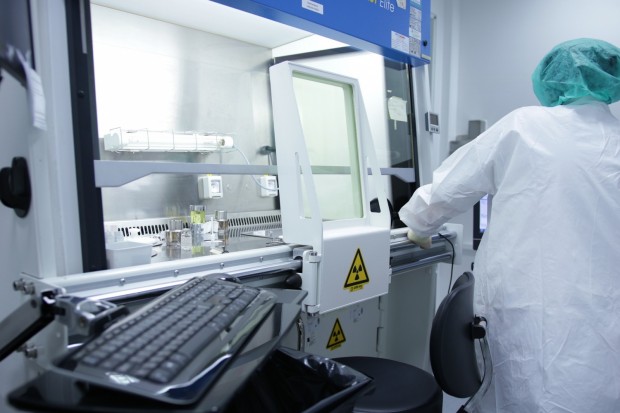5 Breakthrough Technologies
The definition of breakthrough innovation is always different. Some people define it as disruptive innovation while others use it to refer to a particular technological breakthrough that has a major impact on the cost or efficiency of a product.
However, nearly all these definitions share one thing: breakthrough innovation is defined as an innovation that fundamentally alters a market or industry. It is actually a combination or combination of several innovations that are aimed at solving particular problems or opportunities.
This is because it is often impossible to solve a very important problem without using many different ideas and methods. This means that you will still need to work hard to find other innovative solutions to give you a competitive edge.
Specific innovations offer huge advantages. Combining these innovations with new business models, and a variety of technological innovations can lead to greater and longer-lasting competitive advantages.
1. Vaccines against messenger RNA
We were extremely fortunate. Messenger RNA is the technology behind two of the most potent coronavirus vaccines. It has been around for over 20 years.
Scientists from several biotech companies switched quickly to mRNA when the Covid-19 pandemic started last January. In late December 2020, more than 1.5 million people died from COVID-19 in the world. The vaccines were approved by the United States in order to end the pandemic.
The new Covid vaccines, which are based on an unexplored technology in therapy, could revolutionize medicine and lead to vaccines for various infectious diseases including malaria. If the coronavirus continues its mutation, mRNA vaccines could be easily modified quickly.
Messenger RNA is also promising as a cheap solution for HIV and sickle cell anemia. Also, mRNA can be used to fight cancer. Antonio Regalado discusses the medical and historical significance of the new science of messenger RNA.
2. Anti-ageing drugs
Human trials have shown that the first wave of an anti-aging drug has been successful in treating people. These drugs won't prolong your life, but they can slow down or reverse certain diseases. These drugs work by killing certain cells, which build up over time.
They are also known as "senescent cells" and can cause low-level inflammation. This suppresses normal cell healing mechanisms and creates an unhealthy environment for nearby cells. Unity Biotechnology, a San Francisco-based company, reported its first results with patients suffering from mild to severe osteoarthritis of the knee. In the second half 2020, results from a larger clinical trial will be available.
Similar drugs are being developed by the company to treat age-related lung and eye diseases. Senolytics, as well as a variety of promising approaches to combating the biological causes of aging and other diseases, are currently being tested in humans. Ahest injects components made from the blood of young people into patients in an effort to stop cognitive and functional decline in those with mild-to-moderate Alzheimer's disease.
The company also offers Parkinson's and dementia drugs in human trials.
Researchers are attempting to determine if there is a way to delay the onset of many diseases that are associated with aging, such as heart disease, cancer, and arthritis.
3. Lithium-metal battery
The sales pitch for electric vehicles is tough. Electric vehicles are expensive and can only be driven for a few hundred km before needing to be charged. It takes much longer to stop for gasoline.
These drawbacks all have to do the limitations of lithium-ion battery technology. According to the Silicon Valley startup, it now has a battery that will make electric cars more affordable for mass consumers. QuantumScape developed the lithium metal battery.
Initial tests have shown that the battery can increase range by up to 80% and can be charged quickly. VW has agreed to sell the startup electric cars with this new battery type by 2025, according to the contract. Although the prototype battery is not yet complete, it is smaller than what is needed to make a car.
QuantumScape, along with other lithium metal battery experts, could be able to make electric cars more attractive to millions of customers. James Temple explains how a lithium-metal battery works and the reasons scientists are so excited by the latest findings.
4. The Phoenix
To safely dissolve plaque in vessels, Launch Medicals The Phoenix uses sound waves (sometimes called shockwaves). These waves penetrate the tissue to cause painless microtrauma.
This treatment causes your body to grow new blood vessels to support tissue recovery. Although it is not an instant fix, Li-ESWT can result in more blood vessels and less plaque.
5. Green Hydrogen
Hydrogen has been a promising alternative to fossil fuels. It is clean burning and doesn't emit carbon dioxide. It also has a lot more energy so it can be used to store energy from temporarily renewable sources. It can also be made from liquid synthetic fuels to replace diesel or gasoline.
The majority of hydrogen produced so far has come from natural gas. This process is messy and requires a lot of energy. Green hydrogen is now affordable enough to be practical due to the rapidly falling cost of solar and wind energy.
You can get hydrogen by removing the electricity from the water. Europe is leading the way. Peter Fairley says that these projects are only a step towards a global network electrolysis plants powered with solar and wind power, which produces clean hydrogen.
Conclusion
It would be appropriate to say that 1 in 1000 innovations come and blow our minds and force our ideologies into conformity just to mark a new start.
Although these technologies may not be the best, they allow us to see things from a different perspective. Once it is possible, it will be of greater benefit to humanity.
See Now: NASA's Juno Spacecraft's Rendezvous With Jupiter's Mammoth Cyclone
* This is a contributed article and this content does not necessarily represent the views of scienceworldreport.com





Join the Conversation